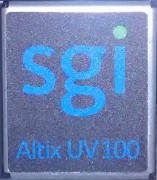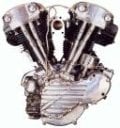I remember reading that SGI kind of did a nasty FU license scheme on their R-Bricks
Apparently when you first install a R-Brick it trys to figure out which 03400+ you are and then locks the configuration in the R-Brick and you can't use it for other systems
I also remember reading about a clear routing to put the R-Brick's back to factory state
Can anybody shed some light on this ??
Thanks, Adam
Apparently when you first install a R-Brick it trys to figure out which 03400+ you are and then locks the configuration in the R-Brick and you can't use it for other systems
I also remember reading about a clear routing to put the R-Brick's back to factory state
Can anybody shed some light on this ??
Thanks, Adam


 .
.








 (single-CM)
(single-CM)

















 machine.
machine.
